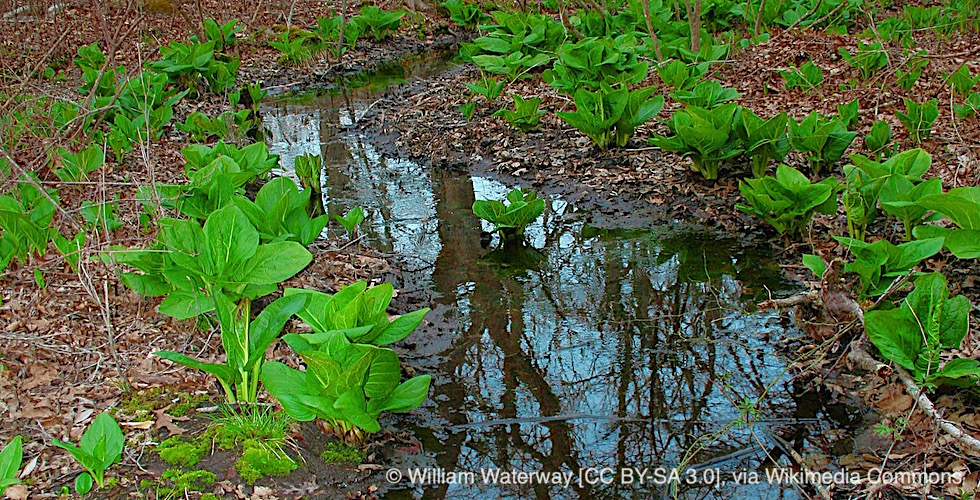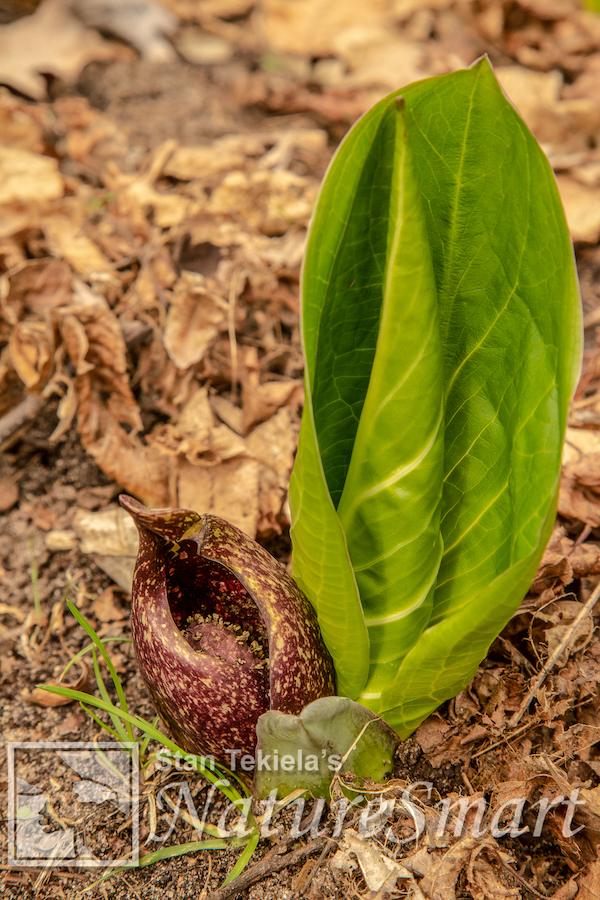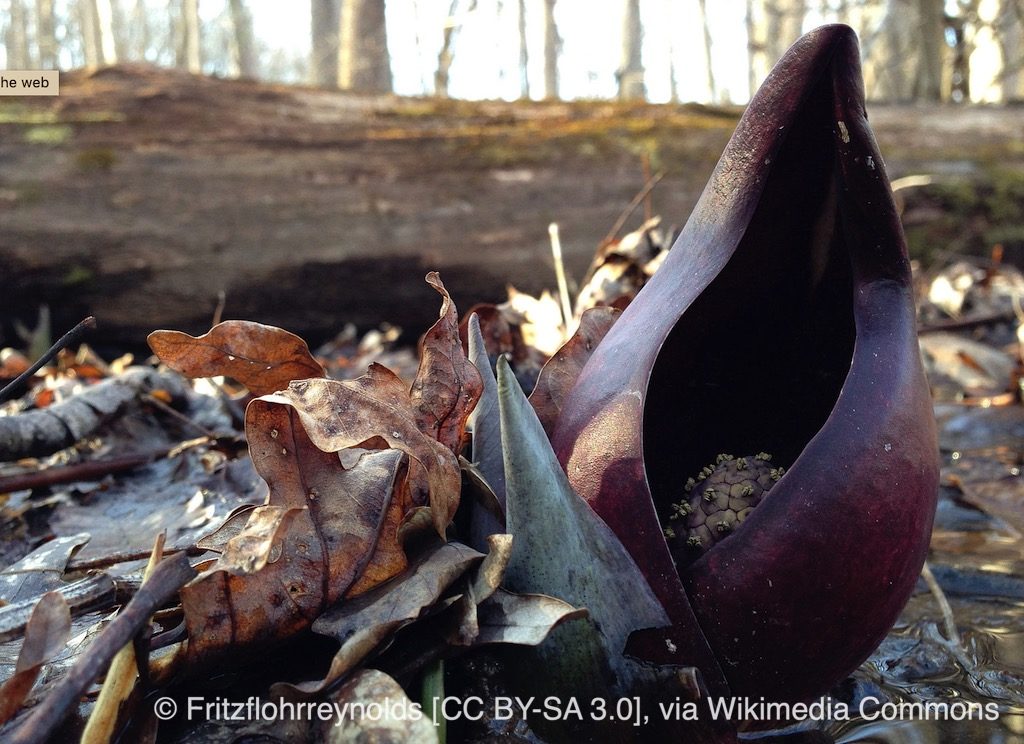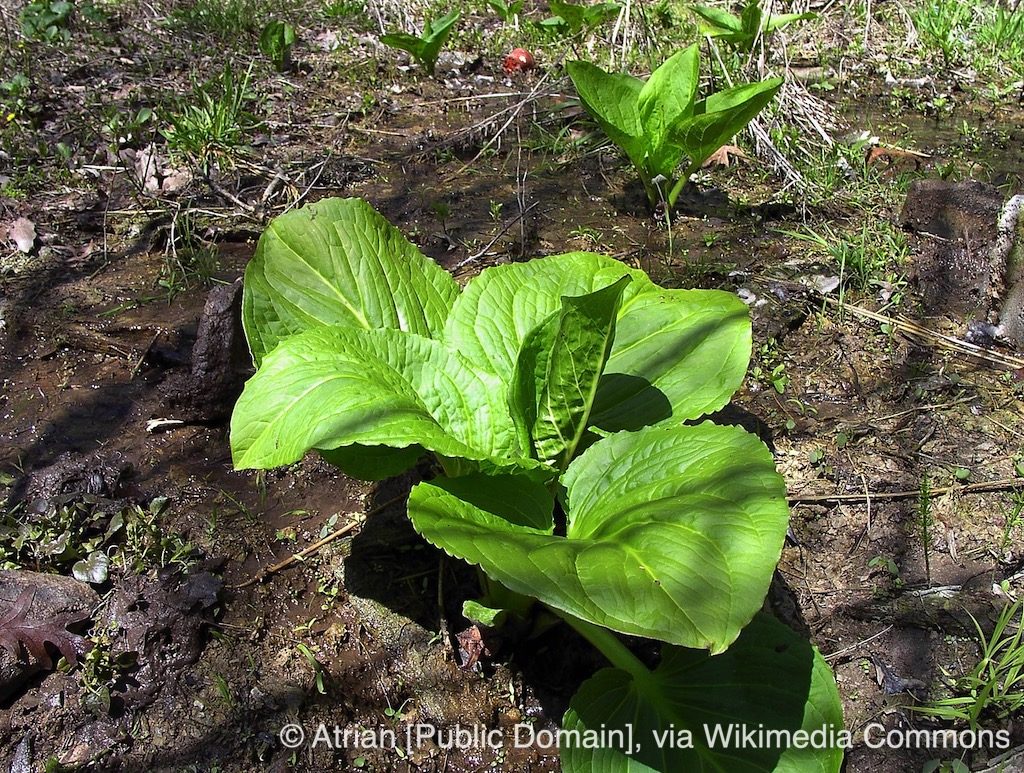
Eastern Skunk Cabbage, Unsung Hero of the Plant World
Wildlife photographer and naturalist Stan Tekiela introduces us to the Eastern Skunk Cabbage, a cool and unsung hero in the plant world.

Some people are mainly interested in large animals such as deer, elk, or bears. These mega-fauna are a very popular group of animals. Others are fascinated with birds—small, often brightly colored, winged beauties. Of course, what I especially enjoy about nature is… everything! I enjoy the large animals along with the tiny birds and let’s not forget about the plants. Yes, I enjoy the green plants because they are the unsung heroes of the natural world. They do all the hard work and get none of the attention or recognition.
From the tiny and unnoticed wildflowers to the large and impressive sequoia trees, I love plants. This was painfully obvious recently when I geeked out in front of some friends and family when we were hiking and unexpectantly came across a large patch of Eastern Skunk Cabbage (Symplocarpus foetidus) growing in the woods.

Skunk Cabbage is a crazy cool plant that is one of the first green plants to grow and send out a flower each spring. This is truly a remarkable plant because it sprouts a large mottled, maroon, hood-like flower while the ground is still frozen and often while snow still blankets the ground. Amazingly, it does this by producing its own heat, raising the surrounding soil and air temperatures anywhere from 25 to 60 degrees F. That’s right, you read that correctly. The plant produces its own heat by cyanide-resistant cellular respiration to melt its way through frozen ground and snow. This is one of just a handful of plants (thermogenic plants) that produce their own heat. The process is far too complex for me to explain how it works here, but when you see it for yourself, you will be amazed.
The stems of the plant’s leaves remain belowground, sending up just the flower, which is a long spadix and spathe. This is just a fancy way to say that the flower is surrounded by a sheath (hood) that protects and provides a micro-environment for early flying insects. In addition to the heated space, the club-shaped flower structure (spadix) contains many tiny flowers that give off a foul or skunky smell, which helps to attract insects such as scavenging flies, stoneflies, and bees. This is also how it got its common name.
In addition, it is believed that the heat from the plant helps to spread the aroma of the flower in the late winter air, which helps attract more insects. And once it attracts the insects, they stick around longer to enjoy the warm air, which means more of its flowers gets pollinated. After all, that is the name of the game: pollination.
This plant is native to eastern North America from Nova Scotia down to North Carolina and Tennessee—and northwest to Minnesota. It grows mainly in wet woodlands where water pools or stands. Sometimes you find just a few plants, but mainly they grow in large groups of hundreds of plants. When you do see these large patches of heat-generating plants, it’s very impressive.

If all of this isn’t enough to convince you that these are amazing plants, consider this. The Skunk Cabbage has contractile roots, which means that the roots have recurved hairs that pull the body of the plant deeper into the muddy soils each year. In effect, the plant grows downward into the earth. Each season the plant grows deeper and deeper into the soil, making the older plants nearly impossible to remove from the ground.
After the flowers are pollinated, the plant produces berry-like fruits that contain the seeds. The seeds float on water, which is how they get dispersed away from the mother plant. The leaves are large, up to 2 feet long and 1 foot wide. The leaves contain less water than comparable leaves and break down faster than other leaves.
There are many cool critters and birds in the natural world, but the green plants are what makes all life on earth possible. Nothing could survive without the unsung heroes of the natural world, the plants.
If you enjoyed Stan’s post, you may consider one of his amazing nature books: Majestic Eagles, Wild Birds, or Backyard Birds: Welcomed Guests at our Gardens and Feeders. Young readers will delight in his award-winning children’s books, such as Whose Butt?, Critter Litter, and Jump, Little Wood Ducks.
You can follow Stan on Facebook and Twitter, or contact him via his web page. Stan’s nationally syndicated NatureSmart Column appears in more than 25 cities spanning 5 states (Minnesota, Wisconsin, Michigan, Illinois, and Pennsylvania) and is circulated to more than 750,000 readers.
For more stories about wildlife and nature, sign up for our newsletter now!
More posts from Stan:
Indigo Bunting—A Familiar Summer Visitor
The Nesting Behaviors of Sandhill Cranes
Big Birds, Baby Birds, Birds Everywhere
Stan Tekiela observes Marsh Wrens
The Magical, Mystical World of Sandhill Cranes
For more stories about wildlife and nature, sign up for our newsletter now!



James Supernor
I agree the skunk cabbage is hero from another planet. It’s my favorite harbinger of spring. I have been looking for a book on the natural history of skunk cabbage but can not find one.